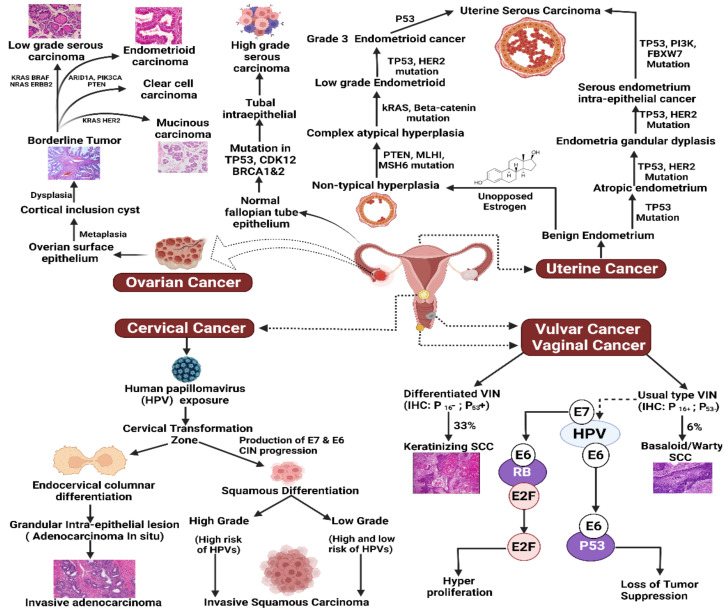Figure 1.
Pathogenesis of gynecological cancers. Ovarian: Borderline tumors can form from the ovarian surface epithelium and can develop into low grade serous, endometrioid, clear cell, and mucinous carcinoma by mutation and alteration of certain genes, e.g., KRAS, BRAF, NRAS, HER2, CTNNB1, BRAF, ERBB2, ARID1A, PIK3CA, PTEN, HER2, etc. High-grade serous carcinoma is developed from normal fallopian tube epithelium by the mutation of TP53, CDK12, BRCA1 and 2. Uterine: Uterine cancer result from TP53, HER2, PI3K, FBXW7, KRAS, PTEN, MLHI, MSH6, Beta- catenin mutation, and CTNNBI alteration. Vulvar: (uVIN: E6 degrades the tumor suppressor p53; E7 inactivates the tumor suppressor RB and releases E2F resulting in hyperproliferation.) (dVIN: Chronic dermatoses, especially Lichen sclerosus and Lichen planus, can progress to dVIN and SCC), (VIN, vulvar intraepithelial neoplasia). Vaginal: TP53 gene alteration and HPV 16 and 18, etc., are the importance carcinogenic factors for both HPV-dependent or -independent vaginal cancer. Cervical: Production of E7 and E6, infection with HPV, CIN progression cause differentiation in squamous cervical cells and cause invasive adenocarcinoma.

